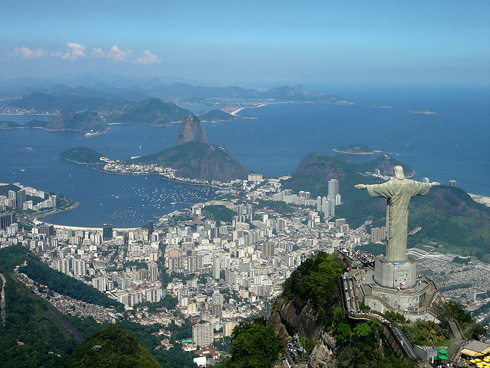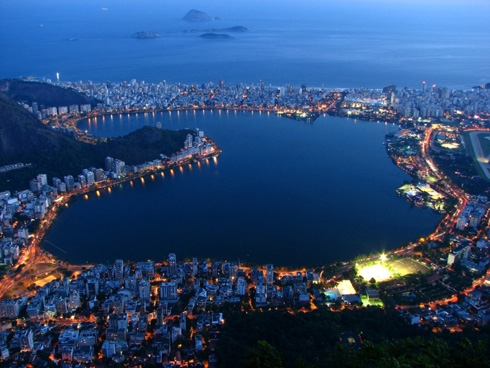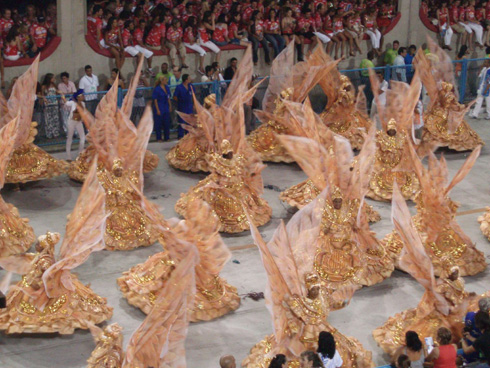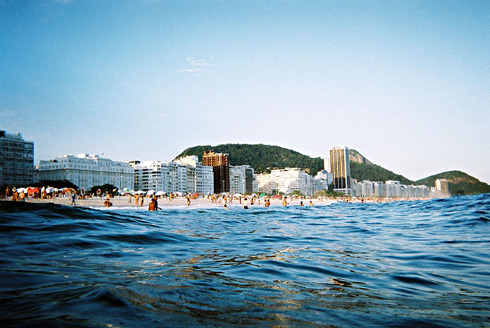Rio de Janeiro is one of the all-time top destinations in South America and in the entire world. It has established a reputation as a top tourist spot that is hard to dispute even if the city struggles with social discrepancies, security issues and even the unrestrained slum areas that seem to sprout in pockets within the city. No matter what, people coming from around the globe still desperately want to visit Rio de Janeiro.
 Photo by Matarazzo
Photo by Matarazzo
Cariocas, as what natives are called, cannot agree on which vantage point affords the best 360° view of Rio — Pao de Acucar (Sugar Loaf) or Cristo Redentor (Christ the Redeemer). Cristo Redentor in Corcovado Mountain was given (or won?) the distinction of being in the list of the New 7 Wonders of the World. Your best bet is to experience both and decide for yourself. From these vantage points, one can see the famous beaches of Copacabana and Ipanema.
Rio de Janeiro History
The Portuguese first landed in the rivers off the Atlantic Coastline on January 1, 1502 — hence Rio de Janeiro or January River. The city was founded in 1565 by the Portuguese but was always threatened by other colonizers especially the French. In the 17th century gold was found in the area so the colonial capital was moved to the city of Rio. It would have remained just a colonial capital but Napoleon Bonaparte’s invasion of Portugal caused its Royal population to migrate to Rio. The city of Rio de Janeiro became the only capital of a European kingdom outside of Europe. The migration of the Portuguese nobilities brought in an influx of African slaves too.
 Photo by Mariordo
Photo by Mariordo
Even after the declaration of Brazil’s independence, Rio remained the country’s capital until 1960. Rio de Janeiro became autonomous but its privileges as one were revoked in 1975 thus putting Rio de Janeiro city under the state of Rio de Janeiro.
The city is busily preparing as host of the 2016 Summer Olympics Games.
 Photo by Marcelo Matarazzo
Photo by Marcelo Matarazzo
Rio de Janeiro, Colorful Carnivals and Festivals
Time your visit to Rio de Janeiro before the Lenten Season to participate in the numerous Samba School Parades much like the New Orleans’ Mardi Gras. For 2011, the schedule of the parade is up for the 12 competing Samba Schools which by the way are not really all schools to learn samba. Dates are slated for March 6 and 7, 2011 starting at 9:00 P.M. onwards. The more awaited carnival in Rio now, however is the New Year’s Eve Reveillon. More carnivals and festivals are thought of year-round.
 Photo by Marcus Correa
Photo by Marcus Correa
The Famous Beaches of Rio de Janeiro
Copacabana and Ipanema are not just words in popular songs. These are actually famous beaches in Rio de Janeiro. There are other beaches too in Leblon, Grumari and Barra de Tijuca if you want a quieter scene but what would be the point of going to Rio if it’s quiet time that you want? There is a beach for each type of person in Copacabana and Ipanema. Each “posto” (lifeguard post) in the beaches of Ipanema and Copacabana has a designated beach spot for gays, moms and kids, artists, young people and more. It is also where the famous black and white sidewalk is. Be careful where you station yourself in this 4 kilometer curved beach.
 Photo by Fernando Stankuns
Photo by Fernando Stankuns
Hang gliders are usually in São Conrado while Arpoador is for the surfer dudes. For those who had enough of partying, Urca is the beach to be.
There is no way you can get bored when visiting Rio de Janeiro. Its lively, friendly and colorful atmosphere, along with its rich history and culture make it one of the top destinations in South America.

 By
By 






